Brand new 🎁 Source Audio True Spring Reverb With Tap Tempo Pedal 🧨
$259.00 Original price was: $259.00.$94.99Current price is: $94.99.
- Guaranteed High Quality
- The quality you expect, the service you deserve.
- Shop with Confidence, Pay Safely
- Secure Shopping with Safe Payments

Turn on to the vintage charm of natural spring reverb coupled with pulsing tremolo in the Source Audio True Spring Reverb Pedal. Source Audio doesn’t depend on the off-the-shelf reverb effects processors found in many modern reverb pedals, they meticulously craft every one of their proprietary effects engines and load them to high-powered, 56-bit Sigma DSP. Source’s two man engineering team of Bob Chidlaw and Jesse Remignanti put years of collective man-hours into capturing every nuance and idiosyncrasy of the spring reverb and tremolo effects from some of the music gear industry’s most iconic guitar amps and outboard gear. The result is indisputable sound quality with magnificent tonal depth and precision.
The Source Audio Tap Tempo Switch is included. It is a simple footswitch that adds significant functionality to every One Series pedal in the Source Audio collection. It offers on-the-fly tap tempo control over modulation rates for the Vertigo Tremolo, Lunar Phaser, Gemini Chorus, and Mercury Flanger as well as delay times for the Nemesis Delay. The Tap Tempo also makes it possible to externally scroll through presets on the Nemesis Delay, toggle between distortion engines on the L.A. Lady Overdrive, Kingmaker Fuzz, and AfterShock Bass Distortion, or render virtual knob changes to every One Series pedal. In addition, the Switch has a standard 1/4” output for use with compatible third-party products (normally open [NO], single pull/single throw (SPST)).
The Spring Reverbs
The True Spring’s reverb effects are based on a mechanical design originated by the Hammond Organ Company in the late 1930s. This stark design uses a pair of input and output transducers to inject an instrument’s dry signal into an actual set of spring coils and capture the very distinct reverberations as the sound bounces back and forth within the springs. Of course, Leo Fender adopted this design in the 1960s with the some of his “blackface” amplifiers and a revolution was born.
- Short Spring Reverb: Modeled after the unmistakable twang of “blackface” amplifiers of the 1960s. After extensive research Source found tremendous diversity in the spring reverb sounds of a variety of amps. Some offered a tighter, less animated tone while others sounded “drippier,” with longer sustain and livelier reverb trails. The SHORT Spring reverb engine offers a taut sound with a quick decay and smooth trails.
- Long Spring Reverb: Produces long and deep reverb decays with noticeable “drip” and highly animated trails. The LONG Spring engine is not as dramatic as the TANK Reverb engine, but does offer an extremely authentic representation of some of the livelier reverb tanks found in vintage combo amps.
- Tank Spring Reverb (Outboard Spring): Captures the unmistakable effect of the tube driven outboard spring tanks of the 60s. The sound of reverb tanks like the classic Fender 6G15™ are characterized by their “drippy” attack and animated trail. This original two-spring design produces a bouncing, delay like sound inseparable from the early days of surf rock and spaghetti western soundtracks.
The Tremolos
The True Spring Reverb also allows you to combine any of its iconic spring reverbs with any of the pedal’s three tremolo effects. The True Spring’s tremolos are the same organic effects that originally appeared in the Vertigo Tremolo – the winner of Guitar Player’s “Hall of Fame 2015” and Premier Guitar’s “Premier Gear Award.”
- Opto Tremolo: Optical tremolo (a.k.a. “Photocell Tremolo”) is the effect found in many combo amps of the 1960s. This version of tremolo relies upon a neon light bulb and a light dependent resistor called an “optocoupler.” The non-symmetrical aspects of the light and the optocoupler give the tremolo a distinct choppy character.
- Harmonic Tremolo: This unique effect first appeared in Fender™ “brownface” amps made between 1959 and 1963, which alternately modulated the levels of bass and treble frequencies in the audio signal. The result is a very pleasing and complex tremolo that has characteristics reminiscent of a phaser.
- Bias Tremolo: This approach to tremolo involves using an LFO to modulate the bias voltage of the tubes in an amplifier. This essentially pushes the tubes in and out of saturation. The result is a smooth amplitude modulation with a mild overdrive created by the tube saturation.
The Neuro Editing Systems
Out of the box, the True Spring Reverb couldn’t be simpler – just plug it in, select from the three onboard reverb engines, dial in some tremolo if you like, and start making beautiful music. But something deep and powerful resides just below the surface – the truly “Big Idea” behind all of Source’s One Series pedals is the second, far deeper, set of options and editing tools for crafting the perfect tone. The Neuro Mobile App is available for free at the App Store (iOS) and Google Play (Android). The Neuro Desktop Editor is available as a free download for Mac or Windows systems on their Downloads page. These powerful editing tools offer an advanced collection of deep editing parameters. After customizing your sound, burn it directly to the pedal and easily access it anytime without having to reconnect the Neuro Mobile App or Neuro Desktop Editor.
- Interchangeable Algorithms — Upload any of the additional reverb or tremolo effects directly to the pedal at no additional charge.
- Customize Effects — Tweak an additional set of parameters including advance EQ, pre-delay, diffusion, reverb modulation, virtual spring length, and more.
- Save and Share Customized Presets — Once you’ve fine-tuned an effect, save it to your personal effects collection in the cloud and share it with the growing community of Neuro users.
- Download Presets — Explore Source Audio’s ever-expanding library of effect presets. Choose from Source Audio Factory presets or presets created and published by members of the Neuro Community.
- Signal Routing Options — Re-route the stereo Inputs and Outputs in a number of different ways including Auto Detect, True Stereo, Mono to Stereo, External Effects Loop, and more.
- Simple Connection — The Neuro Mobile App. connects with the True Spring via the mobile device’s headphone jack and Stereo Input 2 on the pedal. A Neuro App connector cable (1/8” to 1/4”) is included with the pedal.
- USB Connection – Use the pedal’s mini USB port to connect the True Spring to the Neuro Desktop Editor, which can be used to edit presets or download the latest pedal firmware.
FEATURES:
- Three Distinct Spring Reverb and Tremolo Effects
- Two Modes of Operation – Use the pedal in Standard Mode for a classic (non-preset) stompbox experience or turn on Preset Mode and save a user preset (including reverb/tremolo effects and knob positions) to each of the three toggle switch positions
- Flexible Stereo Routing – The True Spring is equally at home in a mono or stereo rig, the pedal’s stereo inputs and outputs offer a variety of routing options such as Stereo to Stereo, Mono to Mono, Mono-to-Stereo, Stereo Sum-to-Mono and External Loop Mode
- Universal Bypass — Select Active Analog (Buffered) or True Bypass
- Secondary Tremolo Controls – Press and hold the CONTROL INPUT button to access the True Spring’s tremolo effects (DWELL knob controls tremolo DEPTH / TONE knob controls tremolo RATE / toggle switch selects tremolo type)
- Expression Control — Compatible with Source Audio expression pedals and the Hot Hand 3 Universal Wireless Effects Controller, assign up to three simultaneous parameters with editable depth and direction
- External Tap Tempo – Use the Source Audio Tap Switch to tap in the tremolo rate with a choice of four different beat divisions (quarter, eighth, triplet, and sixteenth)
- External Tremolo Engage and Bypass – Use the Source Audio Tap Switch to engage or disengage the tremolo effects on top of an active spring reverb
| Condition | New |
|---|---|
| Package Contents | True, Spring, Reverb, pedal, Tap, Tempo, pedal, 9V, DC, power, supply, (300, mA, negative, tip), and, 1/8", to, 1/4", cable, for, Neuro, Mobile, App, connection |
| Width | 2.7, in |
| Height | 2, in |
| Depth | 4.5, in |
| Input Connectors | 1/4-inch, TS |
| Output Connectors | 1/4-inch, TS |
| Power Supply | Included |
| Power Consumption | 165, mA |
| Computer Connection | USB |
Be the first to review “Brand new 🎁 Source Audio True Spring Reverb With Tap Tempo Pedal 🧨” Cancel reply
Related products
Reverb Pedals
Reverb Pedals
Reverb Pedals
Reverb Pedals



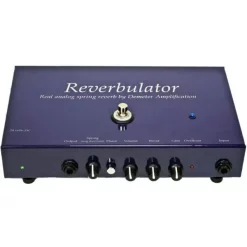
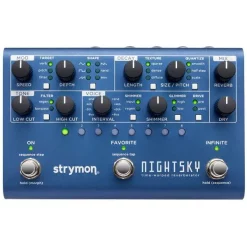
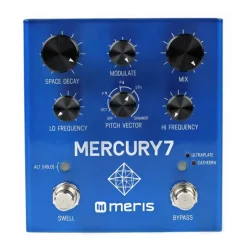
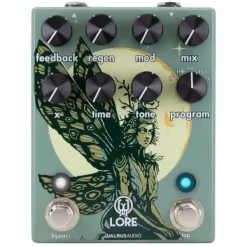

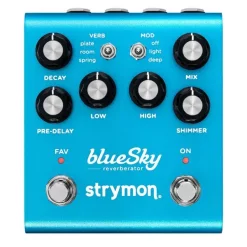

Reviews
There are no reviews yet.